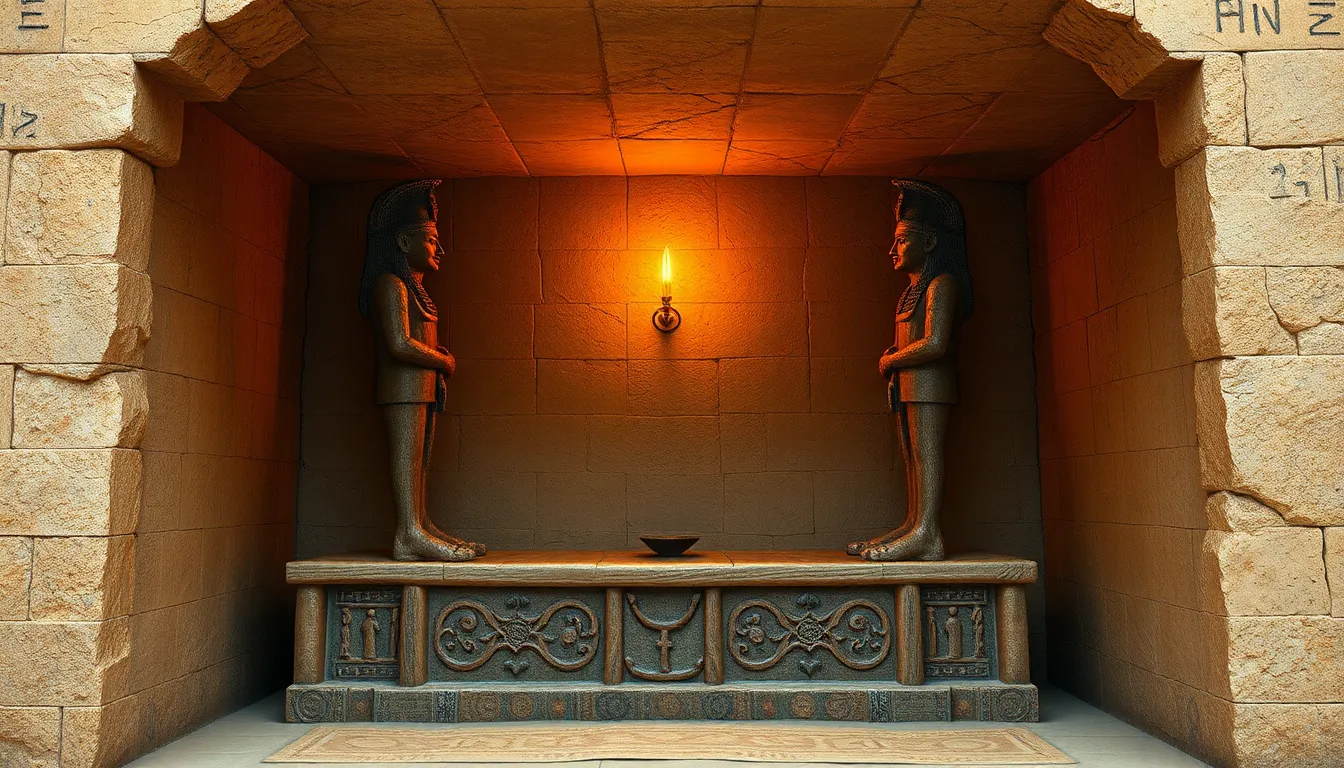The Afterlife in the Coffin Texts: A Comprehensive Overview
I. Introduction to the Coffin Texts
The Coffin Texts are a collection of ancient Egyptian funerary spells found inscribed on the walls and inner surfaces of coffins from the Middle Kingdom (circa 2000-1700 BCE). These texts serve as a critical source of our understanding of ancient Egyptian beliefs about the afterlife.
Historically, the Coffin Texts emerged as a significant development from earlier funerary literature, particularly the Pyramid Texts, which were exclusive to the royal tombs. The Coffin Texts democratized access to afterlife spells, allowing non-royal individuals to participate in the same spiritual protections that were once reserved for the elite.
The significance of the Coffin Texts in ancient Egyptian culture cannot be overstated. They encapsulate a wide range of beliefs, rituals, and mythological narratives surrounding death and the afterlife, reflecting the Egyptians’ profound concern with mortality and existence beyond death.
II. The Concept of the Afterlife in Ancient Egyptian Beliefs
In ancient Egyptian cosmology, life and death were intricately connected. The Egyptians viewed the afterlife as a continuation of life on earth, where the deceased would live in a realm that mirrored their earthly existence.
The role of the afterlife permeated daily life and religious practices, influencing everything from burial customs to the construction of tombs and temples. It shaped moral behavior, as individuals sought to live in a manner that would ensure a favorable judgment after death.
When compared to other ancient Near Eastern beliefs, such as those of the Mesopotamians, the Egyptian afterlife was unique in its focus on individual judgment and the journey of the soul, rather than a more uniform underworld experience.
III. Structure and Content of the Coffin Texts
The Coffin Texts are characterized by their diverse format and organization, comprising hundreds of spells that vary in length and complexity. They were often written in hieratic script and included various sections that served different purposes.
- Key Themes and Motifs: Common themes include resurrection, protection, and the journey of the soul. The texts often invoke deities and cosmic forces to ensure the deceased’s safe passage to the afterlife.
- Notable Spells: Among the spells, some focus specifically on the transformation of the deceased into a divine being, while others provide instructions for navigating challenges in the afterlife.
IV. The Journey to the Afterlife
The journey to the afterlife is a central theme in the Coffin Texts, describing the soul’s passage through various realms after death. Upon death, the soul embarks on a transformative journey, often facing trials and tribulations.
Deities such as Anubis and Thoth play crucial roles in guiding and protecting the souls during this journey. They assist the deceased in navigating the challenges posed by hostile forces and ensure safe passage to the judgment hall.
One of the most significant ceremonies associated with the afterlife is the Weighing of the Heart. In this ceremony, the heart of the deceased is weighed against the feather of Ma’at, symbolizing truth and justice. This moment determines the fate of the soul in the afterlife.
V. The Concept of Judgment and Retribution
The judgment process is presided over by Osiris, the god of the afterlife. The deceased is brought before Osiris, where their heart is weighed against the feather of Ma’at. This judgment reflects the individual’s ethical conduct during their lifetime.
- Consequences of Ethical Behavior: Those who lived virtuously would find their hearts light and thus be granted access to the Field of Reeds, while those who sinned would face dire consequences, including annihilation.
- Reward and Punishment: The Coffin Texts emphasize the notion that moral behavior directly impacts one’s experience in the afterlife, establishing a clear connection between earthly actions and afterlife consequences.
VI. The Afterlife as a Place of Existence
The ideal afterlife is often described as the Field of Reeds, or Aaru, a paradise that resembles the most beautiful aspects of the Egyptian landscape. Here, the deceased can enjoy eternal peace and happiness, free from the struggles of earthly life.
The importance of the afterlife is profound for the deceased, as it represents not just a continuation of existence but also a fulfillment of their earthly aspirations. The experience of the afterlife could vary significantly based on one’s social status, wealth, and moral conduct.
VII. Funerary Practices and Their Connection to the Afterlife
Funerary practices were essential in securing a favorable afterlife for the deceased. The rituals involved in burial customs, such as mummification and the inclusion of grave goods, were believed to aid the deceased in their journey and existence in the afterlife.
- Offerings and Rituals: The Coffin Texts frequently mention the importance of offerings, such as food and drink, provided to sustain the deceased in the afterlife.
- Art and Symbolism: Funerary objects were often inscribed with spells and adorned with symbols that represented protection and the afterlife, reinforcing the connection between art and the spiritual beliefs of the Egyptians.
VIII. Conclusion: The Enduring Legacy of the Coffin Texts
The Coffin Texts have left an indelible mark on later Egyptian literature, influencing the development of subsequent funerary texts and practices. They reflect a deep understanding of the human condition and the desire for immortality that transcends time.
Modern interpretations of the Coffin Texts continue to reveal insights into ancient Egyptian culture and beliefs about the afterlife. Scholars study these texts to better understand the values and spiritual concerns of a civilization that has captivated the world for millennia.
In conclusion, understanding the Coffin Texts and their portrayal of the afterlife is essential for grasping the complexities of ancient Egyptian religion and its enduring legacy. The texts offer a window into a culture that intricately wove the concepts of life, death, and the afterlife into its very fabric, providing a framework that continues to inspire curiosity and reverence today.




